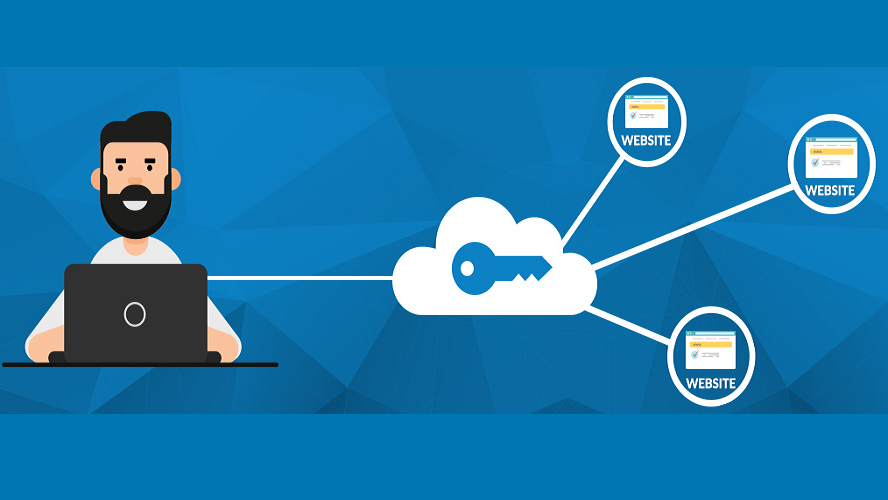Single Sign-On – Its Introduction and Measures to Use It In A Business


In today’s post, we are going to define ‘what is single sign-on technology’ and then, list down SSO approaches to be implemented for making enterprises secure. The purpose of this post is to assist end users with the importance of single sign-on in companies.
What is Single Sign-on?
The methods of single sign-on require officials to login only once and access all applications and apps they require. SSO methods make it simple to authenticate an individual once and thereafter get automatically authenticated while using associated machines. Therefore, SSO eliminates the issue of separately logging into several systems and applications. This means that only one set of login credentials is needed by an individual. It eliminates the stress of remembering n numbers of usernames and passwords.
How Does A Single Sign-on App Work?
The application involves authentication of a person’s identity and then, authorizing access to the application or service for which the person is requesting. It accomplishes this by recovering the profile of users. These profiles can be stored within the SSO app in an HR system or a directory like Microsoft Active Directory. An SSO program validates the computer user, based upon user inputs. These inputs can easily be the accurate login credentials like username and password. Some methods consolidate extra inputs like time of day, last login attempt, user IP address, location, device details, etc. After the user validation procedure, the single sign-on software enables access to the requested documents. For a few resources, this means automatically populating credentials. It is quite similar to some consumer-oriented password managers, which automatically enter the account credentials when anyone visits the vendor website.
Business Password Manager – SSO for Companies
Business password managers have acquired the concept of SSO to another level. These password managers render one place for end users to manage as well as authentic their credentials. From the central authentication stage, the password manager benefits clients with a ‘credential management system’ for each consolidated resource and delivering a Single sign-on experience to users. The major difference between the enterprise-grade password management and basic SSO system is the ability to manage officials across the company in a central way with sets of standards, which enforce corporate security policies. This is caused by a global console used for managing the complete business environment. Extra admin features involved in business password managers comprise of the ability to revoke and assign access to specific programs, analyzing the password health among the base of users, connecting to MS Active directory, and triggering extra authentication standards. Nowadays, the lines between enterprise password managers and SSO have blurred. SSO methods have been originated that:
- Activate federation, eliminating the demand for passwords collectively.
- Acquire in contexts around the individual like device and location.
- Connect to several directories like HR systems, internal databases.
- Activate application program interface-level access for more customize use.
Implementation of Single Sign-on Procedure
Users might notice variations in approaches of single sign-on. Usually, it is done as an application either running on an end node, or on a federated platform. In each situation, the implementation of SSO is used for authenticating the identity of end users only for once. This, in turn, authenticates on a person’s behalf to other programs, resources, and websites. SSO acts as a virtual surrogate in between the client devices and target machines. Single sign-on applications respond to the authentication that prompts from systems and applications, rendering them with valid username and password. It offers a unified and seamless experience for using external and internal web-based apps. Often, the passwords are a basic means of user identification. However, a more protective way to connect officials with their resources is via federation. While talking about the federated infrastructure, trust is made in between SSO solution and resources on the backend. Once the SSO method validates its client, the resources automatically then enable access without extra validation like a password. A federated scenario asks users to login into a service known as an Identity provider (IDP). The IDP then offers some type of token, ticket, or assertion to apps.
Time To End Up The Post With Suggestions
At last, we are going to suggest our readers with some tips to be kept in mind while buying a single sign-on system. There are several service providers in the marketplace who provide the SSO solution. Some of them are CloudCodes, OneLogin, Okta, etc., and picking anyone of them is really a difficult task. Following are some points that need to be considered for selecting a one suitable SSO application in companies:
- Categorize the authentication types (centralized, end node, form fill, federation) to understand which ones are provided by the service provider candidates. Some companies might demand a broader range of SSO types than others.
- Complex platforms might be required to enlist in user prioritization for deciding which authentication checklists are vital, unnecessary, or desirable for each user category. This will help companies in understanding SSO level functionality, which is required in a company.
- Try to keep the SSO program simple! Representing MFA standards across the organizations might be overkill. Also, it can inhibit efficiency and lead users to ignore specific applications. An SSO solution should favor friction-less access.
Well, that was all from our side! In case you need any support or want to clear your doubts regarding CloudCodes SSO Solution, feel free to contact us.